What Is Honey?
The Fascinating World of Honey: Honey is a sweet, viscous food substance made by bees and other insects. Bees produce honey from the sugary secretions of plants (floral nectar) or from secretions of other insects (such as honeydew), by regurgitation, enzymatic activity, and water evaporation. Bees store honey in wax structures called honeycombs. The variety of honey produced by honey bees (the genus Apis) is the best-known, due to its worldwide commercial production and human consumption. Honey is collected from wild bee colonies or from domesticated beehives.
Please watch the video: The Fascinating World of Honey: From Hive to Home

The Fascinating World of Honey
Honey has a long history of human consumption and is used as a sweetener in many foods and beverages. It is also used as a topical treatment for wounds and burns. Some people believe that honey has health benefits beyond its nutritional value, although scientific evidence does not support these claims.
The Fascinating World of Honey: From Hive to Home
How Is Honey Produced?
Honey is produced by bees from the nectar of flowers. When a bee collects nectar, it mixes the nectar with enzymes in its saliva, which breaks down the complex sugars in the nectar into simpler sugars. The bee then stores the nectar in its honey stomach, or crop, and carries it back to the hive.
Please watch the video: The Fascinating World of Honey: From Hive to Home

The Fascinating World of Honey
Once back at the hive, the bee regurgitates the nectar into the cells of the honeycomb. Other bees in the hive then fan the nectar with their wings to help evaporate some of the water from it, which increases its sugar concentration. When the water content of the nectar has been reduced to around 18%, the bees seal the cell with a wax cap to prevent further evaporation. The nectar is now honey!
Please watch the video: The Fascinating World of Honey: From Hive to Home

The Fascinating World of Honey
Bees produce more honey than the colony needs for its own survival, so excess honey is often harvested by humans. To do this, beekeepers open the hive, remove the honeycombs, and extract the honey by centrifuging or straining it. The honey is then filtered to remove any bits of wax or other debris and is bottled or packaged for sale.
How Many Types of Honey Are There?
There are many different types of honey, with the exact number depending on how you define "type." Honey can vary in color, flavor, and aroma depending on the types of flowers the bees visit to collect nectar. Here are a few factors that can influence the characteristics of honey:
Please watch the video: The Fascinating World of Honey: From Hive to Home
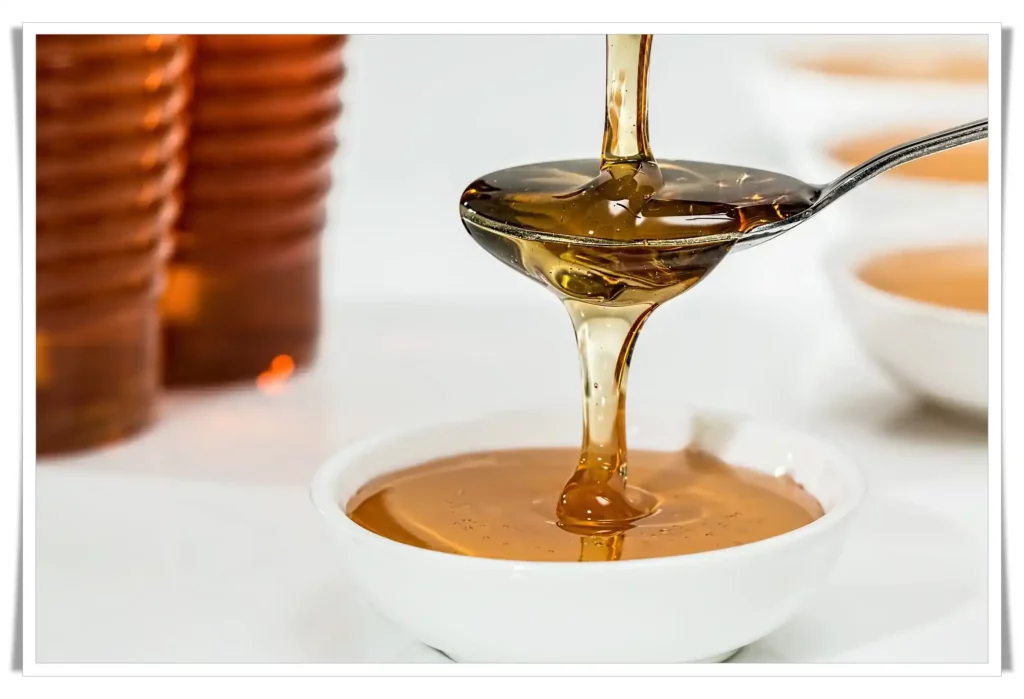
The Fascinating World of Honey
- Floral source: Different types of flowers produce nectar with different sugar compositions, which can affect the flavor and color of the resulting honey. For example, clover honey is light in color and has a mild, sweet flavor, while buckwheat honey is dark and has a strong, robust flavor.
- Geographical location: The types of flowers that are available to bees can vary depending on the climate and geography of the area where they live. This can influence the types of honey that are produced.
- Beekeeping practices: The way that beekeepers manage their hives can also affect the characteristics of the honey produced. For example, some beekeepers may feed their bees a mixture of sugar and water to supplement their natural food sources, which can influence the flavor and nutritional content of the honey.
Overall, there are hundreds of different types of honey that can be found around the world. Some examples include clover honey, orange blossom honey, lavender honey, eucalyptus honey, and many more.
Here are a few examples of different types of honey that vary based on their floral source and not only:
The Fascinating World of Honey
Manuka honey
The Manuka tree or Australian tea tree has been used since the time of James Cook, as a remedy against scurvy. Today, modern medicine uses the leaves, bark, juice, and seeds from the Manuka tree. The essential oil is obtained from the leaves and terminal branches. Among its active compounds are tannins, flavonoids, and an antibacterial agent called Leptospermum.
The honey obtained from the flowers of the Manuka tree has multiple medicinal uses. The extract from the Manuka tree has a regenerating effect on the skin and has antibacterial properties. Deeply cleans the skin and eliminates the bacteria that cause acne. Let's not forget that Manuka flower pollen is used to make one of the most famous types of honey in the world.
Please watch the video: The Fascinating World of Honey: From Hive to Home

The Fascinating World of Honey
Until now it is known, for example, that the flowers, leaves, and other parts of the Manuka tree have multiple benefits for the human body. The infusion of this plant in tea or a spoonful of Manuka honey can help to get a restful and deep sleep. The natural extracts from Manuka also help to effectively treat wounds and superficial burns, relieve the devastating effects of periodontal disease, strengthen immunity and prevent respiratory infections and constitute a natural remedy against gastrointestinal diseases.
At the same time, Manuka extracts are recognized for helping to destroy dangerous microorganisms, such as E. Coli, Staphylococcus Aureus, Streptococcus Fecalis, Pseudomonas aeruginosa, Proteus mirabilis, Proteus Vulgaris, Listeria monocytogenes, Klebsiella pneumonia, Helicobacter pylori, Clostridium difficile , Bacillus stearothermophilus, Acinetobacter baumannii.
Please watch the video: The Fascinating World of Honey: From Hive to Home

The Fascinating World of Honey
Clover honey:
Is a type of monofloral honey that is made from the nectar of clover flowers (Trifolium spp.). Clover is a type of herbaceous plant that is native to Europe, Asia, and North America and is widely cultivated as a forage crop for livestock. Clover has small, pink, white, or red flowers that are a popular source of nectar for bees.
Please watch the video: The Fascinating World of Honey: From Hive to Home

The Fascinating World of Honey
Clover honey is light in color and has a mild, sweet flavor with a slightly floral aroma. It is one of the most common types of honey produced in the United States and is widely available in supermarkets and specialty food stores. Clover honey is also believed to have some health benefits, such as aiding digestion and boosting the immune system.
Clover honey is produced in many parts of the world where clover is grown, including North America, Europe, and Asia. It is often sold as a "generic" honey, as it is widely available and has a mild, sweet flavor that is well-suited to a variety of uses.
Orange blossom honey:
Orange blossom honey is a type of honey that is made from the nectar of orange tree flowers. It is known for its distinctive, sweet flavor and aroma, which is reminiscent of oranges. Orange blossom honey is often used as a sweetener in cooking and baking, and it is also popular as a spread for toast and other foods.
Please watch the video: The Fascinating World of Honey: From Hive to Home

The Fascinating World of Honey
It is believed to have a number of health benefits, including helping to boost the immune system, improve digestion, and reduce inflammation. Some people also use orange blossom honey as a natural remedy for allergies, as it is thought to contain substances that can help to reduce the severity of allergy symptoms.
Lavender honey:
Lavender honey is a type of honey that is made from the nectar of lavender flowers. It is known for its distinctive, floral flavor and aroma, which is reminiscent of lavender. Lavender honey is often used as a sweetener in cooking and baking, and it is also popular as a spread for toast and other foods.
Please watch the video: The Fascinating World of Honey: From Hive to Home
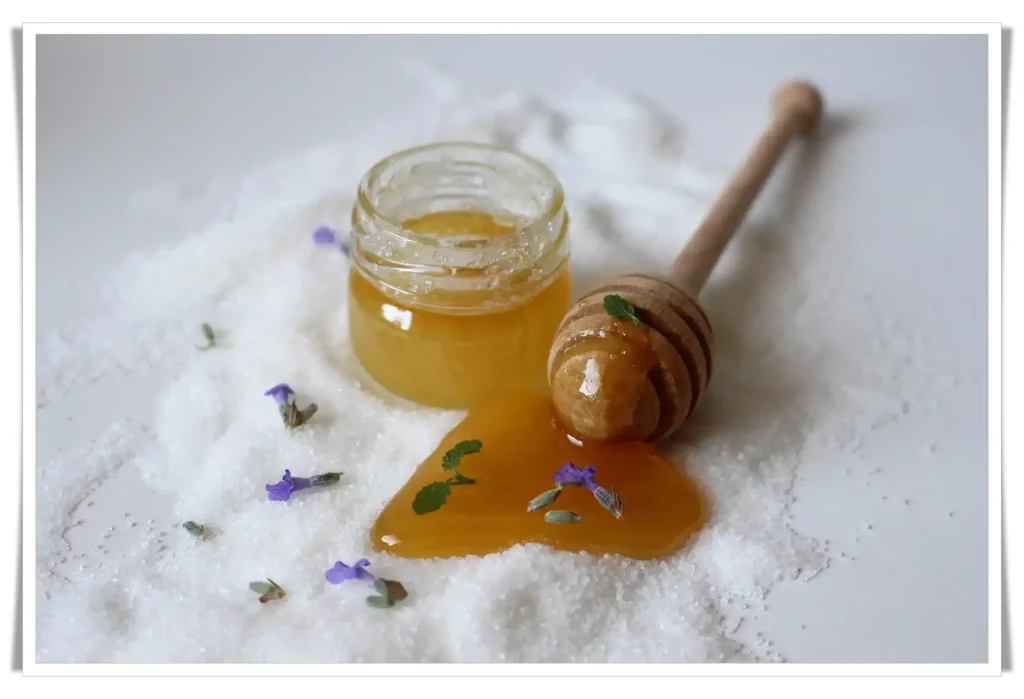
The Fascinating World of Honey
It is believed to have a number of health benefits, including helping to reduce anxiety and stress, improve sleep, and boost the immune system. Some people also use lavender honey as a natural remedy for skin irritation and other skin conditions, as it is thought to have soothing and healing properties. Lavender honey is typically made by bees that have pollinated lavender plants, and it is often produced in areas where lavender is grown.
Eucalyptus honey:
Eucalyptus honey is a type of honey that is made from the nectar of eucalyptus flowers. It is known for its distinctive, slightly menthol flavor and aroma, which is reminiscent of eucalyptus. Eucalyptus honey is often used as a sweetener in cooking and baking, and it is also popular as a spread for toast and other foods. It is believed to have a number of health benefits, including helping to relieve respiratory problems, improve digestion, and reduce inflammation.
Please watch the video: The Fascinating World of Honey: From Hive to Home
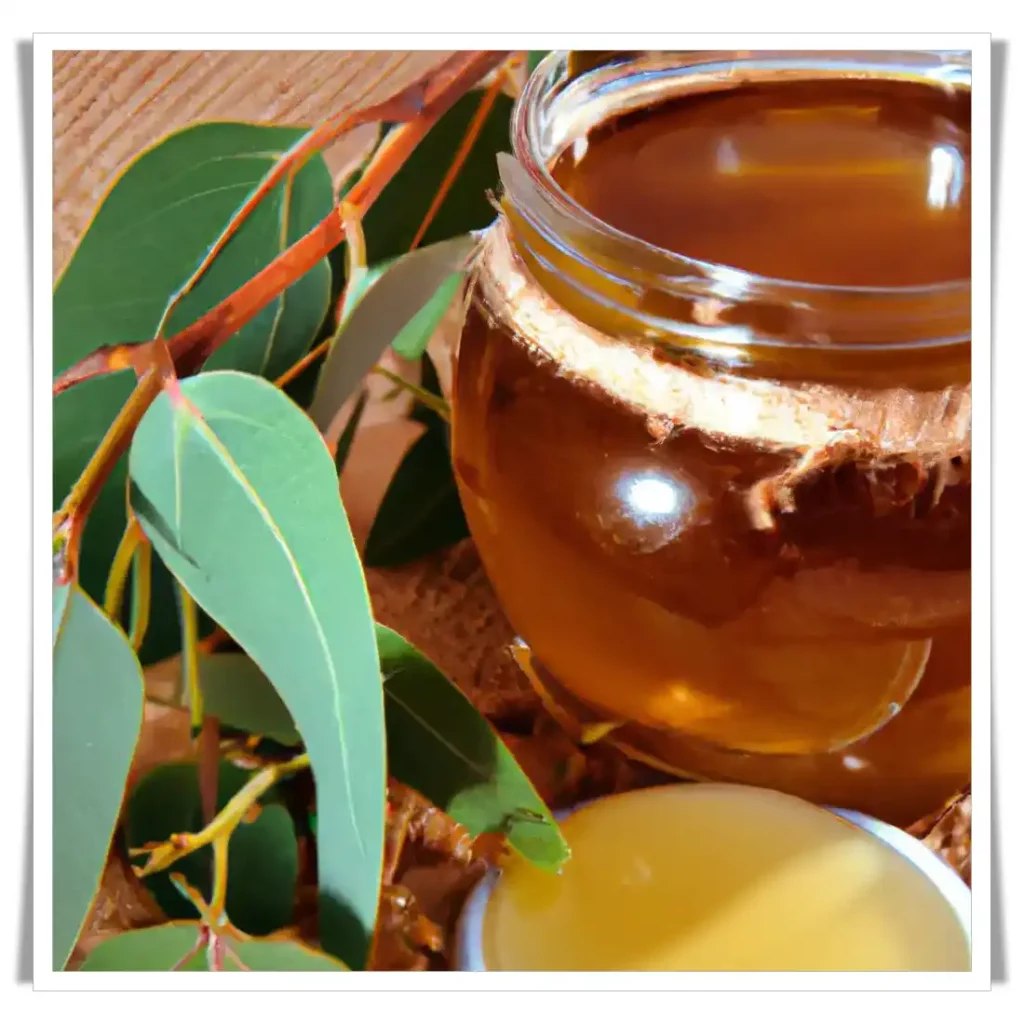
The Fascinating World of Honey
Some people also use eucalyptus honey as a natural remedy for allergies, as it is thought to contain substances that can help to reduce the severity of allergy symptoms. Eucalyptus honey is typically made by bees that have pollinated eucalyptus plants, and it is often produced in areas where eucalyptus is grown.
Buckwheat honey:
Buckwheat honey is a type of honey that is made from the nectar of buckwheat flowers. It is known for its distinctive, robust flavor and dark color, which is much darker than most other types of honey. Buckwheat honey is often used as a sweetener in cooking and baking, and it is also popular as a spread for toast and other foods. It is believed to have a number of health benefits, including helping to improve digestion, boost the immune system, and reduce inflammation.
Please watch the video: The Fascinating World of Honey: From Hive to Home

The Fascinating World of Honey
Some people also use buckwheat honey as a natural remedy for allergies, as it is thought to contain substances that can help to reduce the severity of allergy symptoms. Buckwheat honey is typically made by bees that have pollinated buckwheat plants, and it is often produced in areas where buckwheat is grown.
Acacia honey:
Acacia honey is a type of honey that is produced by bees from Acacia trees. It has a distinctive flavor and color, which can vary depending on the region in which it was harvested. Acacia honey contains higher levels of minerals such as calcium, magnesium, potassium, sodium, phosphorus, zinc, and copper than other types of honey. Additionally, it has good nutritional qualities due to its high content of antioxidant and anti-inflammatory properties.
Please watch the video: The Fascinating World of Honey: From Hive to Home

The Fascinating World of Honey
Some health benefits associated with consuming Acacia honey include improved hair health and ease of digestion. It also possesses antibacterial properties that help to fight against pathogenic microorganisms like Candida albicans or Streptococcus pyogenes (the bacteria responsible for ear infections). All in all, acacia honey offers many potential Health Benefits that you may want to consider if you are looking for quality Honey options!
Tupelo honey:
Tupelo honey is a type of wildflower honey that comes from the tupelo tree. This sweet and fragrant honey has a strong floral flavor that is often enjoyed for its unusual taste. It is also considered to be high in antioxidants, which make it beneficial for your health overall.
Please watch the video: The Fascinating World of Honey: From Hive to Home
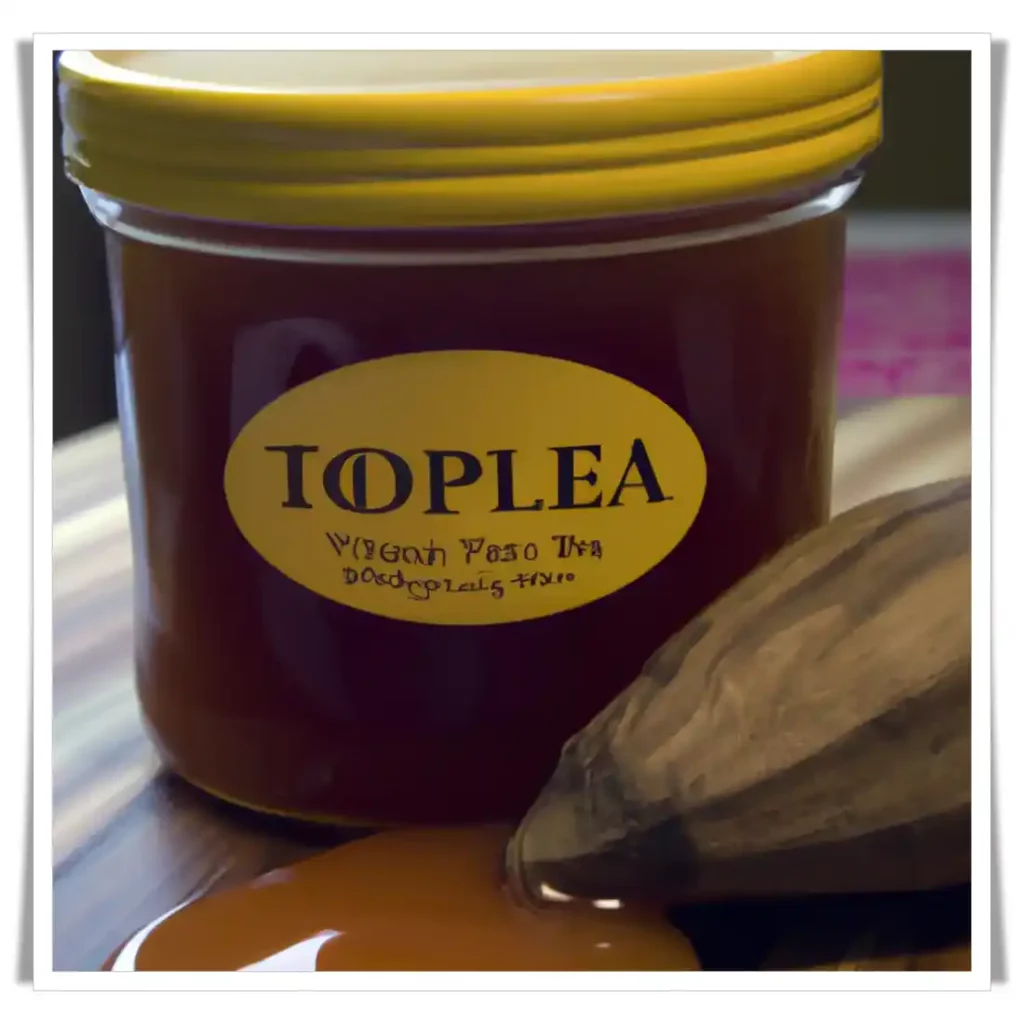
The Fascinating World of Honey
Tupelo Honey contains significant levels of monofloral hydrocarbons (MFHs), including terpenes such as α-pinene, β-caryophyllene, and γ-terpineol. These compounds are responsible for the unique smell and flavor of Tupelo honey, as well as its anti-inflammatory properties. Additionally, HFCs have been shown to inhibit Helicobacter pylori bacteria growth in vitro.
All these benefits make Tupelo Honey an excellent choice when it comes to selecting a natural remedy or supplement for your health needs.
Honey from linden flowers:
Also known as lime honey or basswood honey, is a type of monofloral honey that is made from the nectar of linden trees (Tilia spp.). Linden honey is produced by bees that forage on the flowers of linden trees, which are native to temperate regions of Europe and North America.
Please watch the video: The Fascinating World of Honey: From Hive to Home

The Fascinating World of Honey
Linden honey is light to medium in color and has a mild, sweet flavor with a slight floral aroma. It is known for its calming and soothing properties and is often used to help with sleep and relaxation. Linden honey is also believed to have some health benefits, such as aiding in digestion and relieving coughs and colds.
Linden honey is usually produced in small quantities, as linden trees are not as common as some other types of flowering trees. It is typically available in specialty food stores or from local beekeepers in areas where linden trees grow.
Polyflora honey:
Also known as multiflora honey, is a type of honey that is made from the nectar of many different types of flowers.
Polyflora honey is often produced in areas where there are many different types of flowering plants growing close together, such as in a meadow or a field of wildflowers. It can also be produced in areas with a diverse range of cultivated plants, such as a fruit orchard or a vegetable garden.
Please watch the video: The Fascinating World of Honey: From Hive to Home

The Fascinating World of Honey
Polyflora honey is generally light to medium in color and has a mild, sweet flavor. Its aroma and flavor can vary depending on the types of flowers that the bees visited to collect nectar. Some poly flora honey may have a more dominant flavor from one particular type of flower, while others may be more balanced and complex, with a blend of many different floral notes.
Sunflower honey:
This is a type of monofloral honey that is made from the nectar of sunflower plants (Helianthus annuus). Sunflower honey is produced by bees that forage on the flowers of sunflower plants, which are native to North and South America. Sunflowers are tall, annual plants with large, yellow flowers that are a popular source of nectar for bees.
Sunflower honey is light in color and has a mild, sweet flavor with a slightly nutty aroma. It is known for its versatility and is often used as a substitute for other types of honey in cooking and baking. Sunflower honey is also believed to have some health benefits, such as aiding digestion and boosting the immune system.
Please watch the video: The Fascinating World of Honey: From Hive to Home

The Fascinating World of Honey
Sunflower honey is widely available and is often sold in supermarkets and specialty food stores. It is produced in many parts of the world where sunflower plants are grown, including the United States, Europe, and South America.
Rapeseed honey:
Also known as canola honey, is a type of monofloral honey that is made from the nectar of rapeseed plants (Brassica napus). Rapeseed is a type of oilseed plant that is grown for its oil, which is used in cooking, biodiesel, and other industrial applications. Rapeseed plants produce small, yellow flowers that are a popular source of nectar for bees.
Rapeseed honey is light to medium in color and has a mild, sweet flavor with a slightly nutty aroma. It is often used as a substitute for other types of honey in cooking and baking and is known for its versatility. Rapeseed honey is also believed to have some health benefits, such as aiding in digestion and boosting the immune system.
Please watch the video: The Fascinating World of Honey: From Hive to Home

The Fascinating World of Honey
Rapeseed honey is produced in many parts of the world where rapeseed plants are grown, including Europe, Asia, and North America. It is widely available and is often sold in supermarkets and specialty food stores.
Mint honey:
Is a type of monofloral honey that is made from the nectar of mint plants (Mentha spp.). Mint is a perennial herb that is native to Europe and Asia and is widely cultivated for its fragrant leaves and oil. Mint honey is light in color and has a mild, sweet flavor with a refreshing, minty aroma.
It is often used to flavor tea and other beverages, and can also be used in cooking and baking to add a minty twist to dishes. Mint honey is also believed to have some health benefits, such as aiding digestion and relieving sore throats. Mint honey is produced in many parts of the world where mint is grown, including Europe, Asia, and North America.
Please watch the video: The Fascinating World of Honey: From Hive to Home

The Fascinating World of Honey
It is widely available and is often sold in supermarkets and specialty food stores. It can also be found at farmers' markets and online from local beekeepers in areas where mint is grown.
These are just a few examples of the many different types of honey that are available. There are many more types of honey that vary based on their floral source, geographical location, and other factors.
Curiosities related to bee honey…
Honey is the only food that does not spoil. Due to the very low humidity (real honey should contain very little water), it is an environment in which microorganisms cannot survive. It is said that in the tombs of the pharaohs, honey dating back approximately 3,000 years was found, and it could be consumed.
Honey is actually the nectar that the bees regurgitate in the honeycombs, which they then close with the caps of wax and propolis. It doesn't sound very pleasant, but the substances in the bees' stomachs are precisely those that contribute to the durability and beneficial properties of honey.
To collect 500g of honey, the bees must visit approximately 2 million flowers and travel approximately 90,000 kilometers.
During its lifetime, a bee produces only one teaspoon of honey. The equivalent of 15 mg.
Please watch the video: The Fascinating World of Honey: From Hive to Home

The Fascinating World of Honey
In the 40th century before Christ, honey was priceless and offered as a tribute to the gods. Later, it became a payment method. Honey is used to making Mead, an alcoholic drink that is said to have been consumed only by the gods before reaching humans. The ambrosia of Olympus was actually mead based on polyfloral honey.
In the 16th century, in Mexico and Central America, honey was used in cooking, the preparation of drinks, preserving fruits, and even polishing wooden furniture. Now products based on beeswax are used for this.
Organic raw honey is an excellent anti-hangover remedy. Before consuming alcohol, a spoonful of honey dissolved in water or yogurt is recommended. After consumption, another spoonful of honey and 2-3 spoons the next morning.
Please watch the video: The Fascinating World of Honey: From Hive to Home

The Fascinating World of Honey
The Fascinating World of Honey
What does honey contain? What properties does it have?
Honey is a complex mixture of sugars, water, and a variety of other compounds, including vitamins, minerals, and amino acids. The exact composition of honey can vary depending on the types of flowers the bees visited to collect nectar, as well as other factors such as geographic location and beekeeping practices.
Please watch the video: The Fascinating World of Honey: From Hive to Home

The Fascinating World of Honey
Here are some of the main components of honey:
- Sugars: Honey is composed primarily of fructose and glucose, which are simple sugars that are easily absorbed by the body. It also contains small amounts of other sugars, such as maltose and sucrose.
- Water: Honey contains about 18% water, which helps to give it its viscous consistency.
- Enzymes: Bees add enzymes to the nectar they collect to help break down complex sugars into simpler sugars. These enzymes are responsible for the production of some of the other compounds found in honey.
- Vitamins and minerals: Honey contains small amounts of a variety of vitamins and minerals, including vitamin C, calcium, and iron.
- Amino acids: Honey contains a number of amino acids, which are the building blocks of proteins.
- Antioxidants: Honey contains a number of antioxidants, which are substances that can help to protect the body from the damaging effects of free radicals.
Honey also has a number of properties that make it useful for a variety of purposes. It is a natural sweetener that can be used in place of sugar in many recipes, and it is also used as a natural alternative to artificial sweeteners. Honey is also used as a topical treatment for wounds and burns due to its antimicrobial properties, and it is believed to have some health benefits when consumed internally.
However, it is important to note that the health benefits of honey are not well established and more research is needed to confirm its potential effects.
What Other Bee Products Are There?
In addition to honey, bees produce a number of other products that are used by humans. Here are a few examples:
Please watch the video: The Fascinating World of Honey: From Hive to Home

The Fascinating World of Honey
Beeswax:
Bees produce beeswax as a construction material for the hive. It is used by bees to build the comb that they use to store honey, pollen, and their young. Beeswax is definitely a multi-purpose product. Not only does it have cosmetic and nutritive benefits, but it can also be used as an insulator, fuel for heaters or stoves, natural sealant, pesticide deterrent, and wood conditioner.
Beeswax has been used by humans throughout history for many purposes because of its unique properties. It is the best way to moisturize the skin without causing irritation or promoting bacteria growth—two common problems with most lotions and creams. Additionally, beeswax can help protect your skin from the sun's harmful rays since it contains antioxidants that scavenge free radicals and damage cells in the skin.
Please watch the video: The Fascinating World of Honey: From Hive to Home
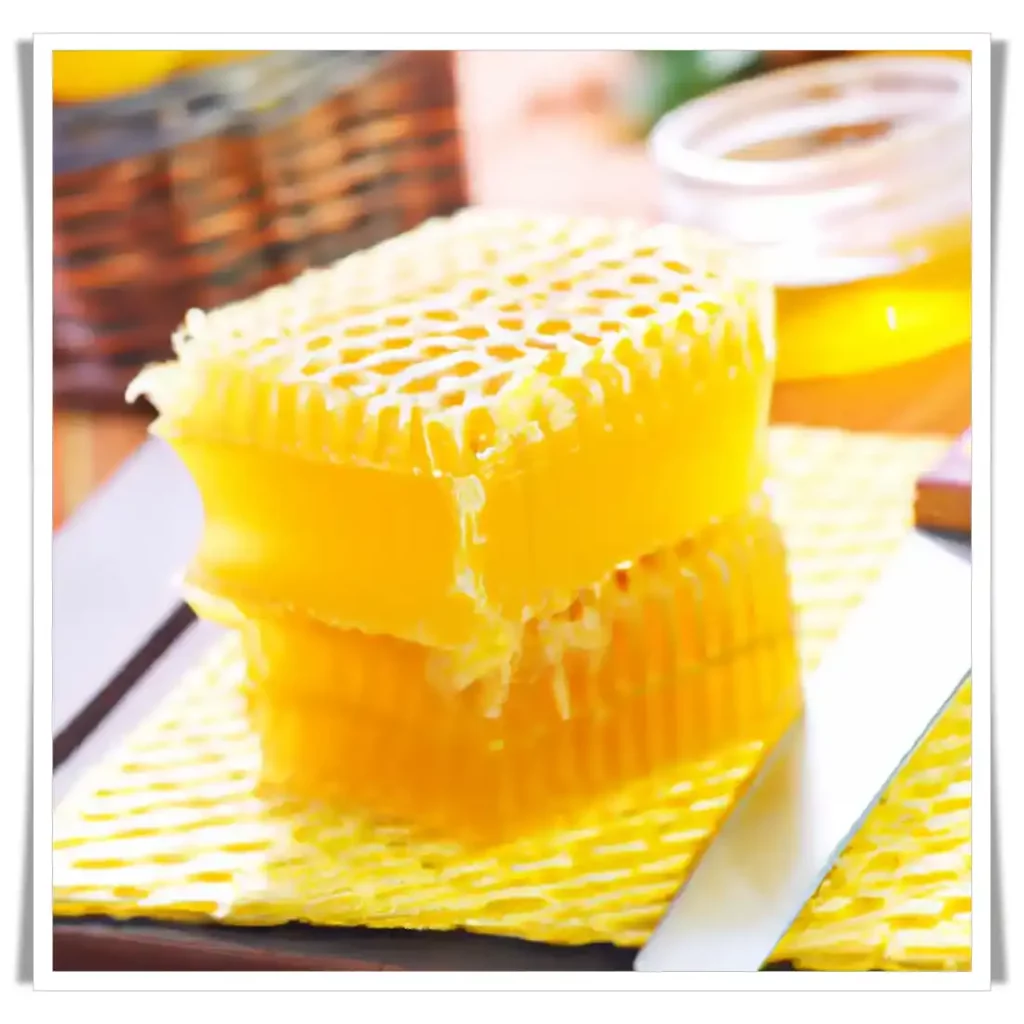
The Fascinating World of Honey
Apart from being beneficial for personal use, beeswax can also be sold commercially as a commodity item. In this case, you will need to harvest honeycomb frames filled with honey before extracting wax pellets out of them using a hot air gun or vacuum machine. There are different grades of wax depending on how much moisture was retained during the extraction process which determines its quality and price point.
Pollen:
Bees collect pollen from flowers as a source of protein for their young. Pollen is also used by humans as a dietary supplement and is believed to have a number of health benefits.
Pollen is one of the most important parts of a bee's life. These tiny creatures are responsible for transferring pollen from flower to flower, and as a result, they play an essential role in pollination.
Pollen contains numerous nutrients that can benefit human health, including vitamins A, B1 (thiamin), B2 (riboflavin), C, D3 (calcium), E, K+, manganese, and zinc.
Please watch the video: The Fascinating World of Honey: From Hive to Home

The Fascinating World of Honey
Some of these nutrients have been shown to help improve immune system function and protect against diseases like cancer or Alzheimer's disease. Additionally, some types of pollen may also improve cognitive performance via the promotion of nerve growth factor synthesis in the brain.
So far there are few long-term studies on how consuming pollen contributes directly to improved human health outcomes. However, since it is enriched with so many vital minerals and vitamins, it makes sense to eat Pollen as part of a healthy diet overall!
Propolis:
Propolis is a sticky, resinous substance that bees collect from plants and use to seal cracks and gaps in the hive. It is believed to have antimicrobial properties and is used by humans as a natural remedy for a variety of ailments.
Propolis is a bee secretion that has been used for centuries to treat various ailments. It is loaded with antioxidants and other nutrients that can improve overall health. Some of the benefits of propolis include improved joint function, better cardiovascular health, protection against respiratory infections, prevention of cancer, and relief from depression and anxiety symptoms.
Please watch the video: The Fascinating World of Honey: From Hive to Home

The Fascinating World of Honey
Propolis contains compounds called flavonoids which are thought to exert these effects by interacting with receptors on cells in the body. Flavonoids have estrogen-like properties, so they may be beneficial for women as well as men who are looking for natural treatments for conditions like hormone imbalance or menopause syndrome.
Many people also use propolis as an insect repellent since it contains terpenes such as limonene which act as protectants against harmful insects such as mosquitoes or ticks. However, there isn't enough research on this topic yet so you should always consult your doctor before using any herbal remedies if you're pregnant or breastfeeding.
Royal jelly:
Royal jelly is a milky substance that is produced by worker bees and fed to the queen bee.
Royal jelly is a by-product of bee farming that is coveted for its many health benefits. It has been used in traditional medicine throughout the world to treat a variety of ailments, and it is currently being researched for its potential use in treating cancer and other illnesses.
Please watch the video: The Fascinating World of Honey: From Hive to Home

The Fascinating World of Honey
Some of the main benefits attributed to Royal Jelly include improved circulation, better skin quality, stronger hair follicles, improved vision, faster wound healing times, and reduced inflammation. In addition to these general benefits, Royal Jelly also contains nutrients like B vitamins (especially niacin) and minerals such as calcium phosphate which are essential for overall health.
Royal Jelly can also help improve heart health by increasing blood flow and cholesterol levels while protecting against stroke damage. Additionally, it helps to boost the immune system functioning by fighting off bacteria and viruses.
It is rich in nutrients and is believed to have a number of health benefits when consumed by humans.
Venom:
Bee venom is produced by bees as a defense mechanism and is used to sting predators. Bee venom is also used by humans as a treatment for a variety of ailments, including allergies and rheumatoid arthritis.
Bee venom is a secretion from the stinger of honeybees that can be extracted and used as an ingredient in products such as face cream, lip balm, eye shadow, shampoo, and toothpaste. It has been traditionally used in Asia for centuries to treat a variety of skin conditions and is now gaining popularity among consumers worldwide.
Please watch the video: The Fascinating World of Honey: From Hive to Home

The Fascinating World of Honey
Bee venom contains rich concentrations of proteins (including neurotoxins), vitamins (A, D3), trace minerals (zinc & magnesium), enzymes, oligosaccharides, terpenes, etc., which offer numerous benefits when applied topically to the skin. These properties include reduction of wrinkles and age spots; improvement in acne vulgaris; reversal or prevention of dryness-related hair loss; soothing effects on psoriasis; enhancement of elasticity & firmness due to stimulating collagen production; relief from eczema symptoms marked by redness/flaking/crusting etc.
These are just a few examples of the products that bees produce. Bees are also important pollinators, as they help to fertilize flowers and other plants and collect nectar and pollen. This is essential for the reproduction of many plant species and is vital for the health of ecosystems around the world.
What are the benefits of bee honey and how can it help the human body?
Bee honey is a natural sweetener that is made by bees from the nectar of flowers. It is a rich source of antioxidants, minerals, and vitamins, and it is believed to have a number of health benefits when consumed in moderation. Here are some of the potential benefits of bee honey:
The Fascinating World of Honey: From Hive to Home
Please watch the video: The Fascinating World of Honey: From Hive to Home

The Fascinating World of Honey
- Boosting the immune system: Honey has been shown to have antimicrobial and antibacterial properties, which may help to boost the immune system and protect against illness.
- Improving digestion: Honey is a natural prebiotic, which means that it can help to promote the growth of beneficial bacteria in the gut. This can improve digestion and overall gut health.
- Reducing inflammation: Some studies have suggested that honey may have anti-inflammatory properties, which may help to reduce inflammation in the body.
- Helping with allergies: Some people believe that consuming local honey can help to reduce the severity of allergy symptoms, as it may contain small amounts of pollen from the area in which it was produced.
- Soothing a sore throat: Honey has been shown to be effective at relieving the symptoms of a sore throat, including pain and inflammation.
- Improving sleep: Honey may help to improve sleep quality, as it contains small amounts of the hormone melatonin, which helps to regulate sleep.
It is important to note that honey should be consumed in moderation, as it is high in sugar and can contribute to weight gain and other health issues if consumed in excess. It is also not recommended for children under the age of one, as it can contain bacteria that can cause serious illness in young infants.
If you have questions or want to comment, please leave them below and I will answer as soon as I can. Thank you for reading ''The Fascinating World of Honey: From Hive to Home''






I really appreciate your help
Your articles are very helpful to me. May I request more information?
Thank you for your articles. They are very helpful to me. Can you help me with something?
Yes. Sure, what is it about?
Sustain the excellent work and producing in the group!
Can you be more specific about the content of your article? After reading it, I still have some doubts. Hope you can help me.
Wow, superb blog layout! How lengthy have you been running a blog for?
you make running a blog glance easy. The full look of your
website is great, as smartly as the content material! You can see similar: najlepszy sklep and here sklep
I constantly emailed this website post page to all my
contacts, because if like to read it next my friends will too.
I saw similar here: ecommerce and also here:
sklep internetowy
Write more, thats all I have to say. Literally, it seems as though you relied on the video to
make your point. You clearly know what youre talking about,
why waste your intelligence on just posting videos to
your blog when you could be giving us something informative to read?
I saw similar here: Dobry sklep